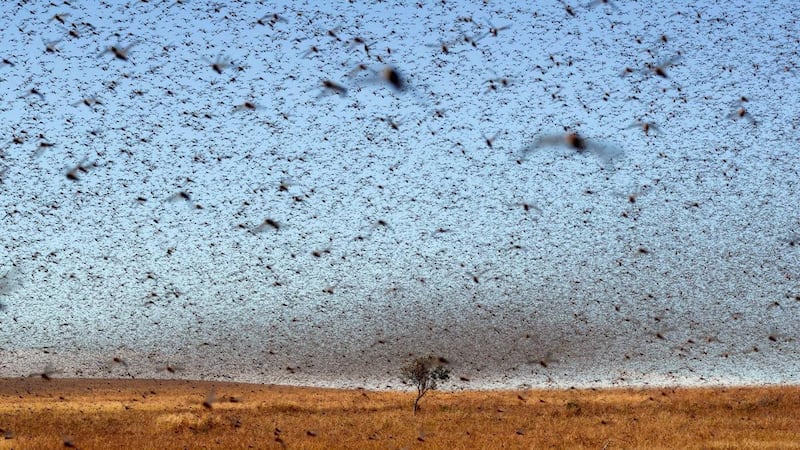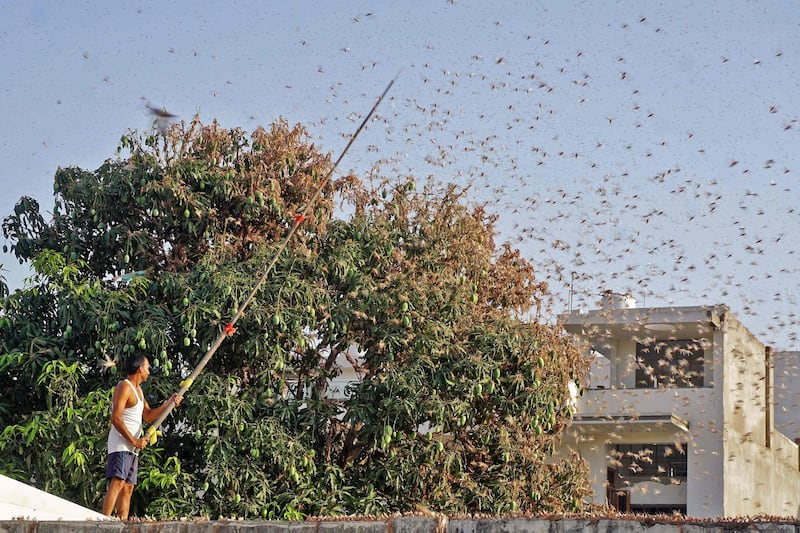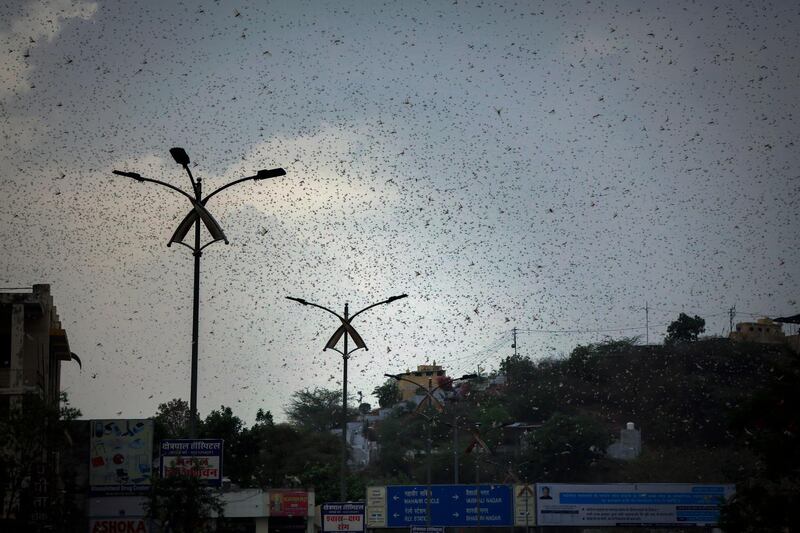An early warning system to spot bio-threats including swarms of locusts has been discussed by UAE environment officials.
The government will look how to monitor insect clouds across the region to protect the country's crops and agriculture.
The Desert Locust Control Plan was discussed by the Ministry of Climate Change and Environment at a meeting of the National Biosecurity Committee.
In May, swarms of locusts were spotted in Abu Dhabi and Dubai after travelling into the country on high winds.
Although uncommon, the pests are understood to have been breeding in Al Ain close to the Oman border before flying into cities with the assistance of low pressure systems.
The effects can devastate farming communities as the bugs strip crops in minutes.
Climatic conditions helped the recent outbreak of locusts seen in the region advance across East Africa, Southwest Asia, and the Red Sea coastal areas.
To stop future swarms from spreading, the environment ministry developed an online Early Biosecurity Notification System to report sightings, while monitoring the movement of locust numbers elsewhere in the region.
In May, the World Bank approved a record $500 million (Dh1.84 billion) in support funds to help countries in Africa and the Middle East fight swarms of desert locusts eating their way across crops.
Djibouti, Ethiopia, Kenya and Uganda, some of the hardest hit nations, received $160m.
During the UAE meeting chaired by environment ministerDuring the UAE meeting led by Dr Thani Al Zeyoudi, Minister of Climate Change and Environment, the committee also discussed the National Plan for Fighting Zoonotic Diseases and Pandemics.
As 58 per cent of infectious diseases in people are zoonotic - meaning they have jumped from animal to human - and 73 per cent of emerging diseases are communicable between humans and animals.
The ministry said it was committed to the development and implementation of a plan to prevent future outbreaks.










